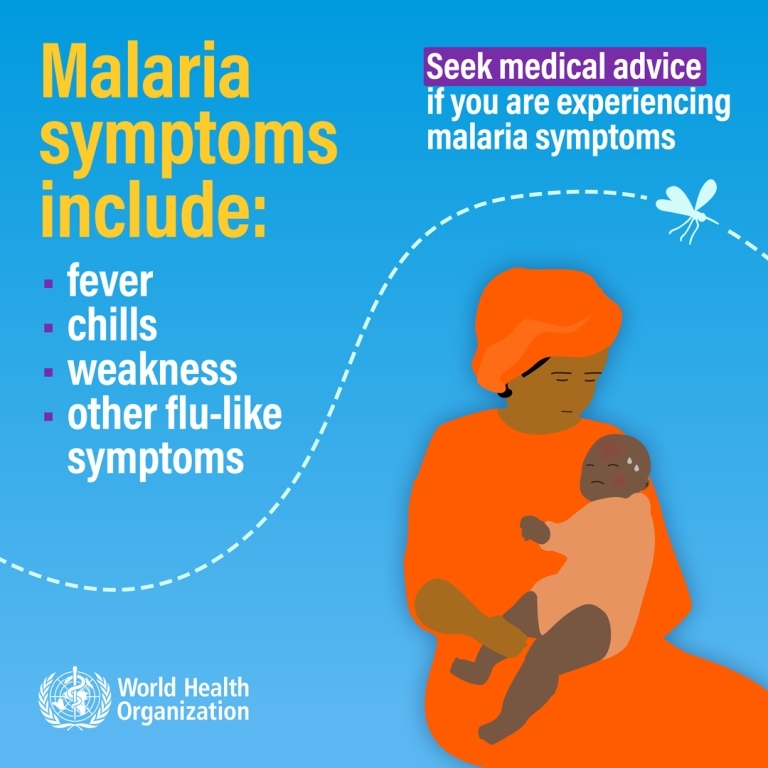
By: N. Munal Meitei
World Malaria Day is observed annually on 25 April since 2008 to bring global attention to an end to malaria and encourage action to reduce suffering and death from the disease. Through its 2023 theme, “Time to deliver zero malaria: invest, innovate, implement”, WHO will focus on the third “i” – implementation to highlight the importance of reaching marginalized populations with the tools and strategies available today.
According to World Malaria Report 2021, there were an estimated 231 million malaria cases worldwide in 2020, up from 229 million in 2019. The report also estimated that there were 627,000 deaths from malaria in 2020, compared to 409,000 deaths in 2019 and 67% of affected are children under five, that’s 1320 dead per day.
In this environment of resource scarcity, more funds is essential for malaria control. Funding should be prioritized for the highest-risk populations and countries. Investment in innovation, research and development has played a critical role in reducing the global malaria burden to achieve the malaria cases and deaths to at least 90% by 2030, the global target.
The transmission of malaria is heavily influenced by the environmental events. Recently, scientists have described the disease as involving a complex interplay between humans, mosquitoes, the plasmodium and the climate. Data collected over recent decades has shown that changes in temperature, rainfall, humidity and other climatic conditions have an impact on important factors that dictate the transmission of malaria, such as the lifespan of the mosquito and the development of malaria parasites in the insect.
According to NASA, 2023 is expected to the warmest years since records began in 1880. The rising in temperature and environmental changes accelerate the distribution of mosquitoes and mosquito-borne diseases. The warmer climate is helping to proliferate the mosquito population at higher altitudes and other geographical areas as well as the risk of transmission rates by adjusting the growth cycle of the parasite and allowing it to develop faster. On the other hand, droughts can also favour the mosquito by converting even the rivers, lakes and ponds into the optimal breeding sites.
Environmental factors affect the transmission intensity and seasonality of the malaria system comprising the vector, the parasite, the human and the environment. Like chess, malaria is played with a few pieces, but is capable of an infinite variety of situations. The triad human–vector–parasite exists within and interacts with the environment, resulting in a variety of unique transmission requiring a tailored package of control interventions.
Climate-based factors, temperature and precipitation, are the primary environmental determinants of malaria. Temperature impacts vector and parasite development and thus is an important constraint on the geographical suitability to malaria. The extrinsic development of the parasite is constrained within a certain temperature range, extremely high temperatures are likely to produce smaller and less fecund mosquitoes and increasing temperatures reduce the time for mosquito maturation from larva to adult form and increase the feeding frequency. Recent models indicate that malaria transmission is constrained to temperatures between 16°C and 34°C, with optimal transmission at 25°C.
The presence of natural predators of mosquito larvae can contribute to control the population size of malaria vectors, depending on the physicochemical properties of the water habitat. Another important aspect is poverty, as the disease get higher risk with the houses without screens, doors and/or windows. Malaria also concentrated in remote areas and/or among highly mobile or hard-to-reach populations, including forest goers, migrants, indigenous people, military and refugees.
Environmental management benefits go beyond malaria and are expected to affect the incidence of dengue, lymphatic filariasis, yellow fever and other vector-borne diseases. Thus, by promoting a healthier environment, we are directly benefited from malaria and other diseases. However, the adoption of environmental strategies demands local knowledge and expertise. One study estimated that for cost of saving one life by cutting down on carbon, 78,000 lives may be saved annually by using mosquito nets, environment safe sprays and subsidies for effective therapies.
Realistically, it is probably the case that most malaria control programs do not have the proper knowledge and expertise to effectively account for the local environment in control efforts, and maybe do not even have comprehensive entomological information. Thus, filling in these gaps is imperative and the task could be better accomplished by fostering an integrated collaboration between the health workers, donors, the industry, academia, civil societies, NGOs and different sectors of the government.
While much work still needs to be done to reach zero malaria, the world has had great success at controlling. In the past twenty years, malaria deaths have decreased 88%, and despite a 15% increase in malaria cases during the first year of the COVID-19 pandemic. Most patients recover quickly from malaria symptoms after treatment, but severe complications such as severe malarial anaemia, cerebral malaria, coma, or death can occur sometimes if treatment is delayed.
Malaria is an acute febrile disease and number one enemy for the world today. The disease knows no national boundaries. But malaria is a preventable and treatable disease though it has a devastating impact on the health and livelihood of people all over the world. Effective vector control, including the use of insecticide-treated nets and indoor residual spraying along with a better environment are crucial to prevent and control the transmission of the disease.
Through education, advocacy, fundraising, volunteering and taking preventive measures, we must protect ourselves and fight against malaria. To ensure a healthier and more prosperous future for all, let’s protect our environment for a malaria-free world.
(The author is a Environmentalist email: [email protected])



